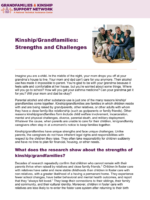Prevention Resource Guide
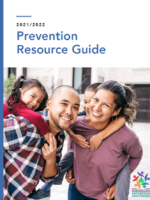
This Resource Guide was developed by the Office
on Child Abuse and Neglect (OCAN) within the U.S.
Department of Health and Human Services’ Children’s
Bureau, Child Welfare Information Gateway, and the
FRIENDS National Center for Community-Based Child
Abuse Prevention. OCAN released its first Resource
Guide more than 15 years ago with the goal of raising
awareness about emerging child abuse prevention
concepts. It was created primarily to support communitybased
service providers who work to prevent child
maltreatment and promote family well-being. However,
over the years many others—including policymakers,
health-care providers, program administrators, teachers,
child care providers, parent leaders, mentors, and clergy—have found the resources useful.
Legal and Financial Differences Between Adoption and Kinship Legal Guardianship (KLG)
Legal and Financial Differences Between Adoption and Kinship Legal Guardianship (KLG)
The New Jersey Department of Children and Families (DCF) Division of Child Protection and Permanency (CP&P) strives to support all youth in care to achieve legal permanency
through reunification, adoption, or kinship legal guardianship (KLG). This document outlines legal and financial information regarding adoption and KLG. Additional information is
provided regarding policy, practice, and supports related to non-permanency CP&P case goals to provide a full picture of permanency options available
Family Matters: Multigenerational living is on the rise and here to stay
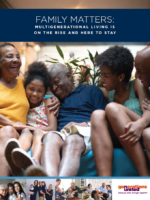
Family Matters: Multigenerational living is on the rise and here to stay.
Our results are clear: multigenerational living is indeed on the rise in 2021, with more than 1 in 4
Americans (26%) living in a household with 3 or more generations. Given our finding in 2011 that 7
percent of Americans lived in a multigenerational household,4 this means that multigenerational living
has nearly quadrupled in the past decade (a 271 percent increase from 20115 to 2021). This finding is
incredibly striking, and our survey reveals some of the impetus for this staggering growth.
Tax Benefits for Grandparents
Grandparents who are raising their grandchildren may not be aware of the many tax benefits they may be able to claim. Here is a brief FAQ about what’s at stake.
Quick Reference Mental Health Guide

Quick Reference Mental Health Guide
The COVID-19 pandemic continues to impact every aspect of our lives. This public health emergency has presented unprecedented challenges to our schools and communities. In June, the New Jersey Department of Education (NJDOE) released The Road Back: Restart and Recovery Plan providing necessary information and considerations for a return to in-person instruction to our school district leaders. Since the provision of those guidelines, districts have made difficult decisions regarding the safe reopening of their schools based upon local needs assessments, staffing capacities, current enrollment numbers, and the unique physical structures within each school. New Jersey students and educators returned to school utilizing operational models such as: hybrid learning, remote instruction, or full in-person instruction. While districts have approached the challenge of school reopening in a variety of ways, all school communities are facing the same fundamental reality that their students and staff have endured, and continue to endure, significant stress and trauma as a result of the ongoing pandemic.
Providing Respite Supporting People and Families Across the Lifespan
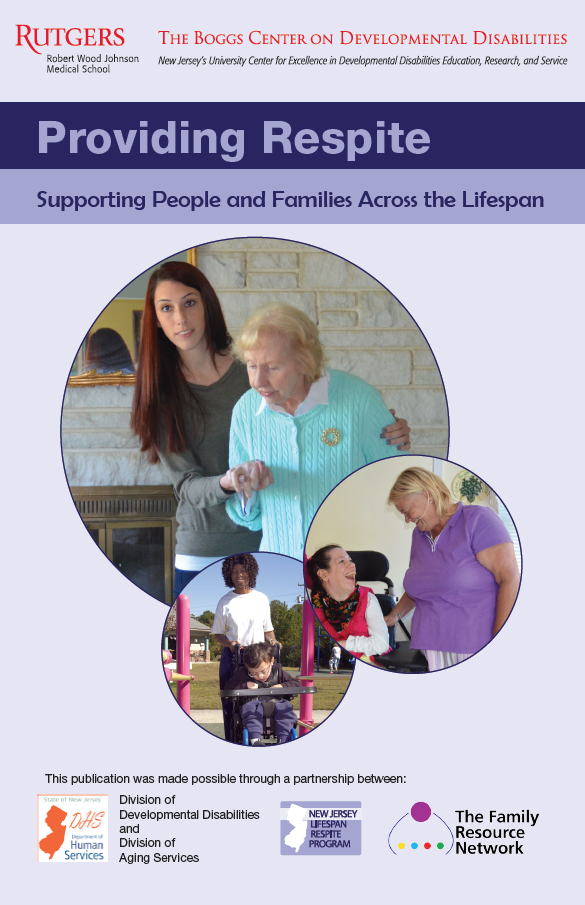
Providing Respite
Supporting People and Families Across the Lifespan
Defining Respite
Respite is a service that offers a short-term break for caregivers that regularly provide support to a child, adult, or senior family member with a disability or chronic health care need.
Respite may be planned, providing scheduled services to allow for intermittent breaks from caregiving, or may be available on an emergency basis in the case of unexpected life events that would negatively impact the individual receiving care. Emergencies could include a personal health crisis, job loss, or housing problem experienced by the caregiver.
Respite can be provided in a variety of settings, including:
In the family’s/individual’s home
In the respite provider’s home
Group homes or supervised apartments
Existing day care centers
Adult day programs
Camps
African American Grandfamilies
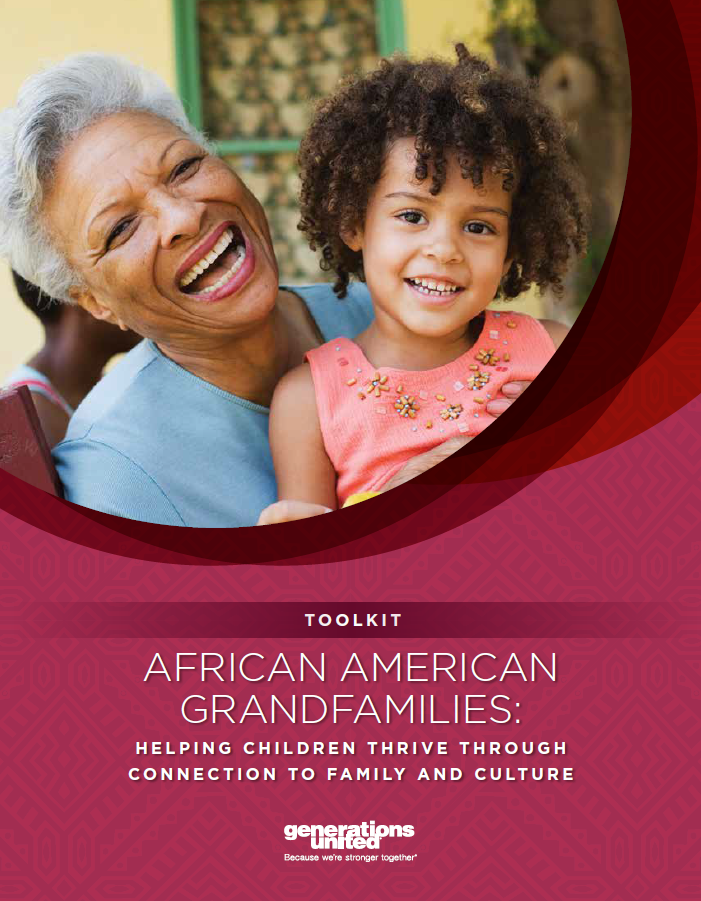
African American Grandfamilies
Both inside and outside the child welfare system, the probability that African American children will live in grandfamilies is more than double that of the overall population, with one in five African American children living in grandfamilies at some point during their childhood.
Getting Down to Basics,Tools to Support LGBTQ Youth in Care
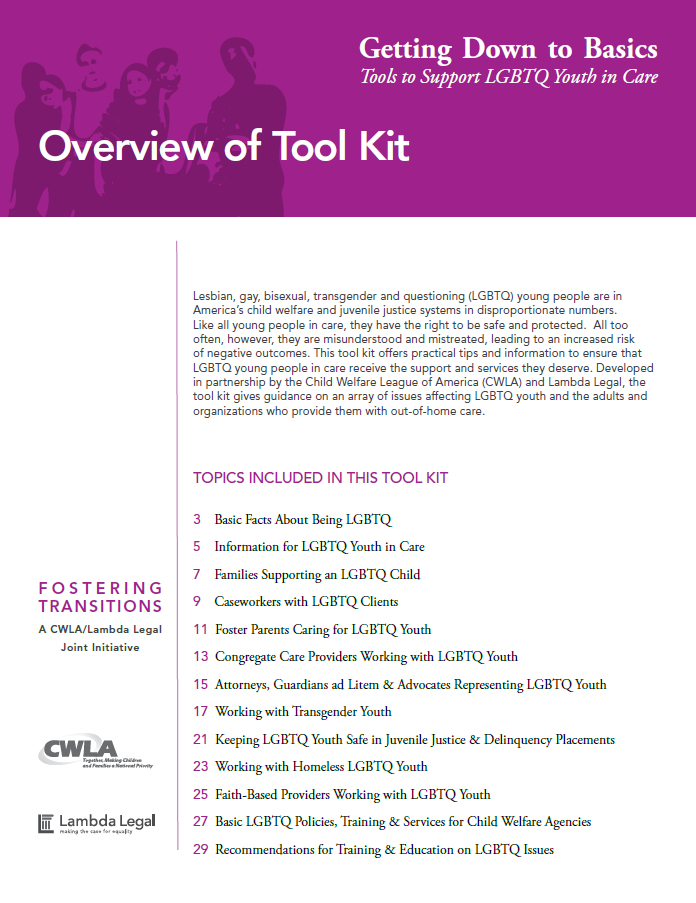
Lesbian, gay, bisexual, transgender and questioning (LGBTQ) young people are in
America’s child welfare and juvenile justice systems in disproportionate numbers.
Like all young people in care, they have the right to be safe and protected. All too
often, however, they are misunderstood and mistreated, leading to an increased risk
of negative outcomes. This tool kit offers practical tips and information to ensure that
LGBTQ young people in care receive the support and services they deserve. Developed
in partnership by the Child Welfare League of America (CWLA) and Lambda Legal, the
tool kit gives guidance on an array of issues affecting LGBTQ youth and the adults and
organizations who provide them with out-of-home care.
The Revised Family Crisis Handbook
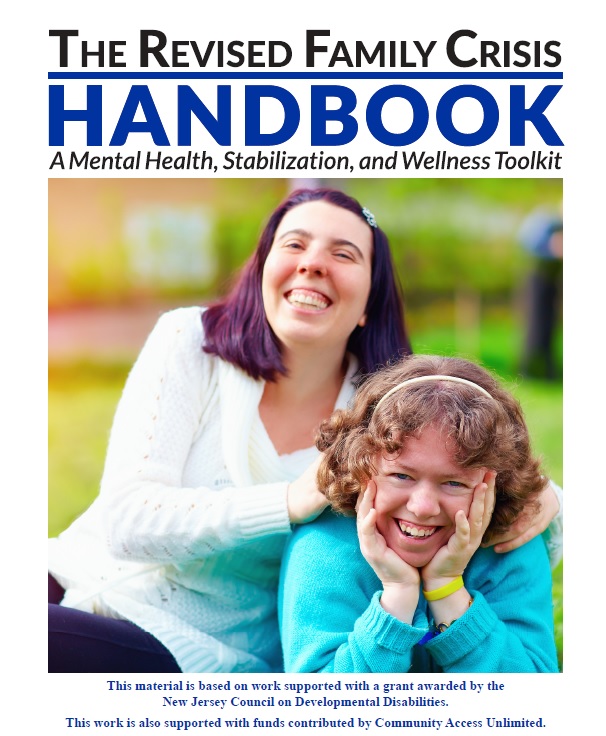
The purpose of this handbook is to empower individuals with disabilities and their families and professional caregivers by providing information with which they can more effectively advocate for treatments, supports, services and the conditions that promote mental wellness. Individuals with the dual diagnoses of developmental disabilities and mental health disorders face multiple challenges in their daily lives.
- « Previous Page
- 1
- 2
- 3
- 4
- 5
- …
- 16
- Next Page »

